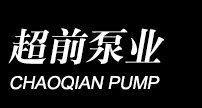What are the main classifications of pumps?
Time:2018-09-14
By professional definition, a pump is a power plant that converts the mechanical energy of a prime mover into the pressure energy and kinetic energy of a fluid...
By professional definition, a pump is a power plant that converts the mechanical energy of a prime mover into the pressure energy and kinetic energy of a fluid, thereby realizing the directional flow of fluid. In use, it is often named for its purpose, such as submersible sewage pump, sludge pump, metering pump, etc. The working principle is different. According to the working principle, it can be classified as follows:
1) vane pump Vane pumps include horizontal centrifugal pumps (single stage, multistage), axial flow pumps, mixed flow pumps, vortex pumps, etc. Centrifugal pump: the use of rotating impeller to drive the fluid to rotate together, through the role of centrifugal force, so that the fluid pressure and kinetic energy can be increased. Axial-flow pump: the use of impeller blades in the airfoil rotating fluid generated by the lift to increase the energy of the fluid. Mixed flow pump: between centrifugal pump and axial-flow pump, part of the use of centrifugal force, part of the use of lift.
2) positive displacement pump Volumetric pump: including reciprocating pump (piston, plunger, diaphragm), rotary pump (gear, screw, slider, etc.) reciprocating pump: the use of periodic changes in working volume to transport fluid, and increase its pressure, including piston, plunger and diaphragm three types. Rotary pump: The use of a pair or several special shapes of rotating bodies, such as gears, screw or other shapes of rotor in the shell for rotating motion to transport fluid and increase its pressure.
3) other types of pumps Vane pumps and volumetric pumps basically include all the types of pumps commonly used, and there are other types of pumps, such as: water ring vacuum Pump-Water ring vacuum pump before starting injected a certain amount of water as working fluid, depending on the rotation of the star-shaped impeller, forming a closed water ring, impeller and water ring between the formation of periodic expansion and reduction The space is formed to form negative pressure, suck the gas and discharge, so as to achieve the purpose of vacuuming.
1) vane pump Vane pumps include horizontal centrifugal pumps (single stage, multistage), axial flow pumps, mixed flow pumps, vortex pumps, etc. Centrifugal pump: the use of rotating impeller to drive the fluid to rotate together, through the role of centrifugal force, so that the fluid pressure and kinetic energy can be increased. Axial-flow pump: the use of impeller blades in the airfoil rotating fluid generated by the lift to increase the energy of the fluid. Mixed flow pump: between centrifugal pump and axial-flow pump, part of the use of centrifugal force, part of the use of lift.
2) positive displacement pump Volumetric pump: including reciprocating pump (piston, plunger, diaphragm), rotary pump (gear, screw, slider, etc.) reciprocating pump: the use of periodic changes in working volume to transport fluid, and increase its pressure, including piston, plunger and diaphragm three types. Rotary pump: The use of a pair or several special shapes of rotating bodies, such as gears, screw or other shapes of rotor in the shell for rotating motion to transport fluid and increase its pressure.
3) other types of pumps Vane pumps and volumetric pumps basically include all the types of pumps commonly used, and there are other types of pumps, such as: water ring vacuum Pump-Water ring vacuum pump before starting injected a certain amount of water as working fluid, depending on the rotation of the star-shaped impeller, forming a closed water ring, impeller and water ring between the formation of periodic expansion and reduction The space is formed to form negative pressure, suck the gas and discharge, so as to achieve the purpose of vacuuming.




